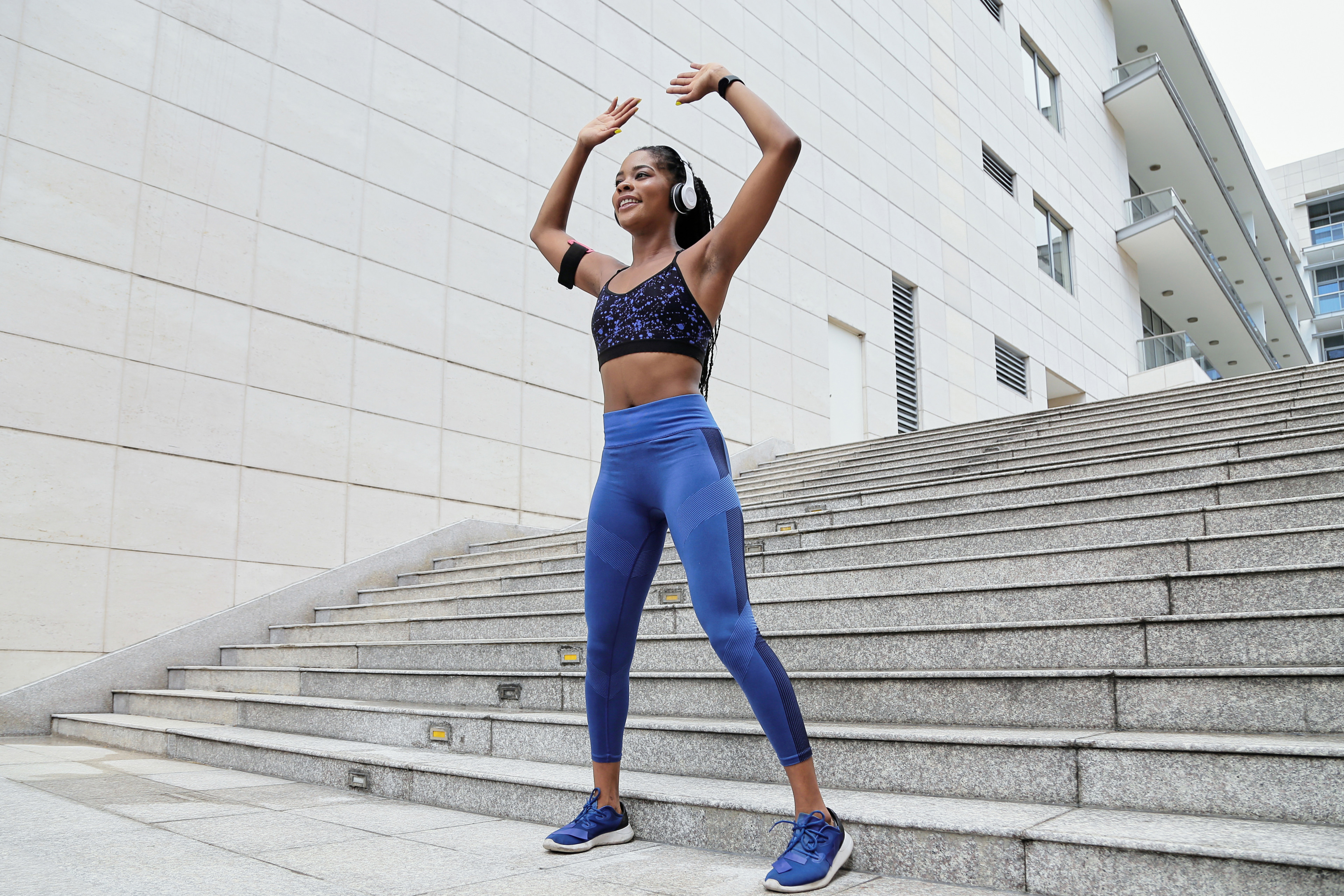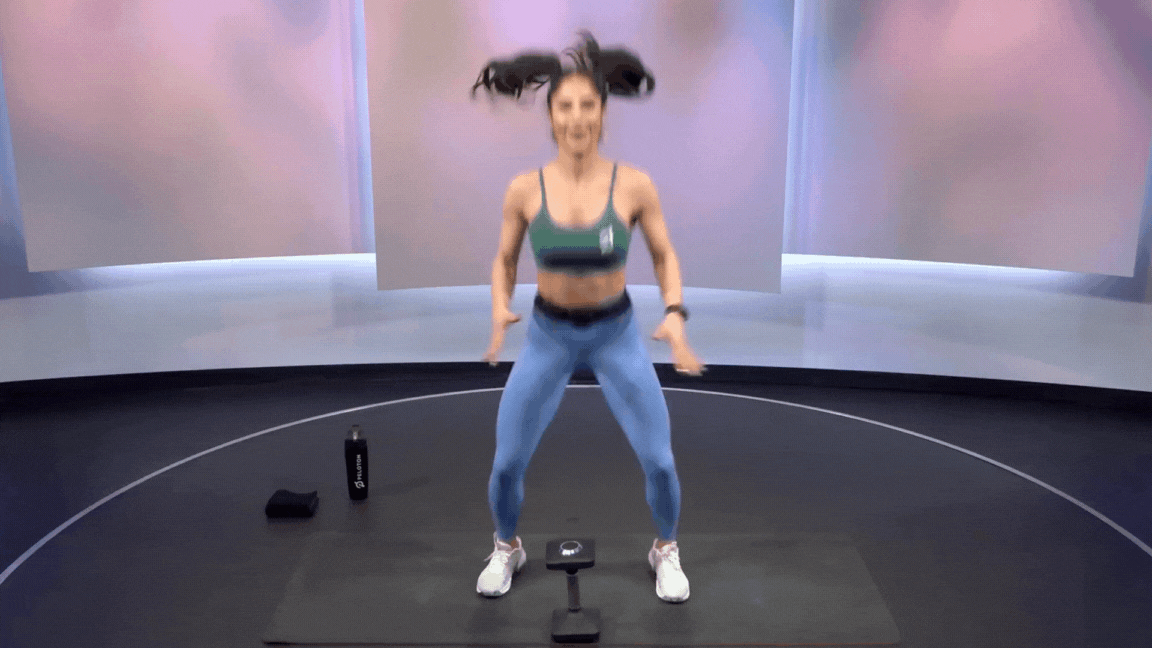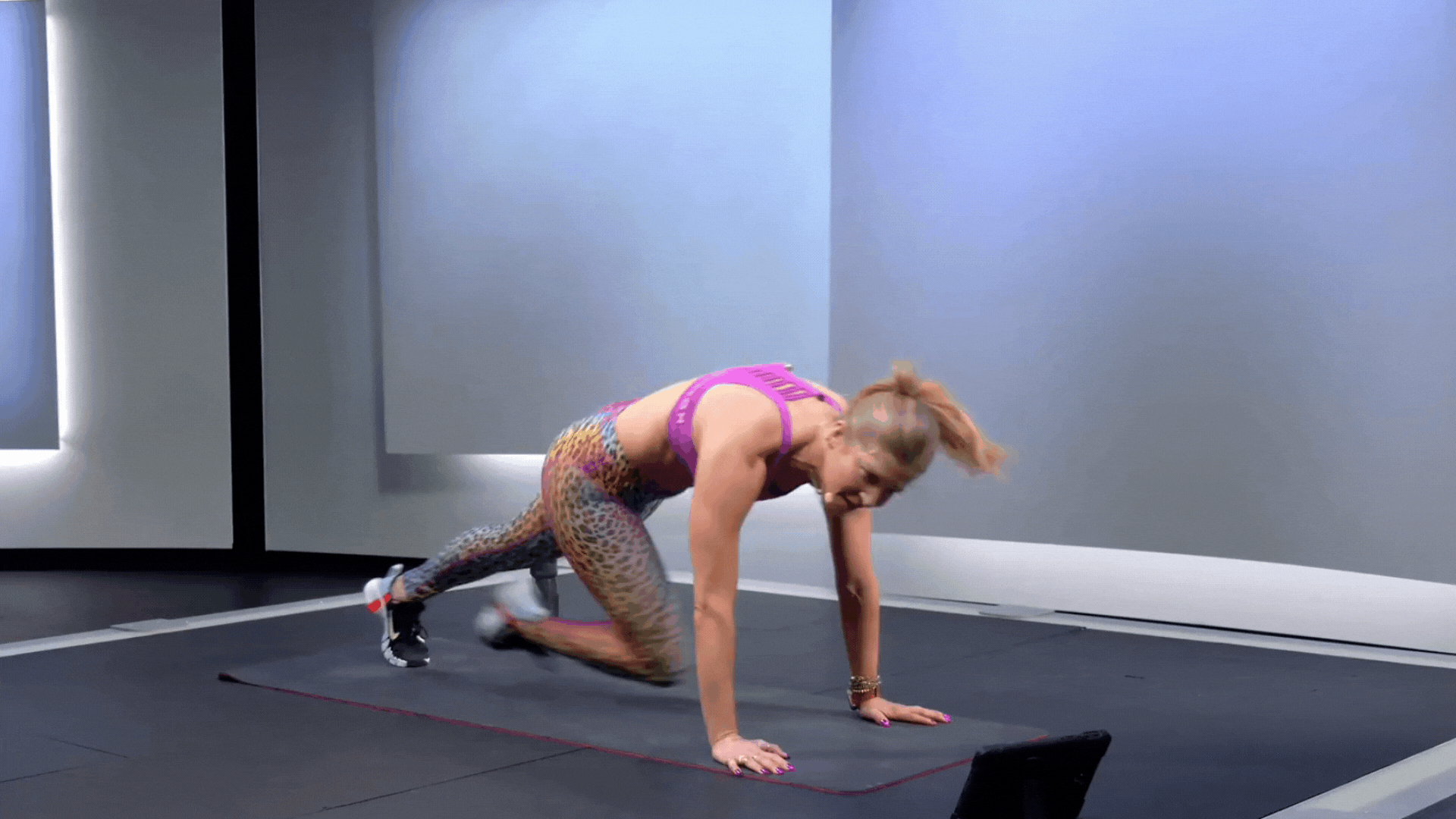
DragonImages/Getty Images
9 Bodyweight Cardio Moves to Get Your Heart Pumping—Regardless of Your Fitness Level
No weights or machines needed.
By Amber Sayer•
What Are the Benefits of Doing Cardio at Home?
Tips for Doing Cardio Workouts at Home
The Best Cardio Exercises You Can Do at Home
The Takeaway
Cardio, cardio, cardio…. Whether you can’t get enough of it or are still searching for a heart-pumping workout that gets you excited, it’s one of the most effective, accessible things you can do to improve your overall health. One of the best parts? You can get a great cardio workout at home without any equipment or machines, even if you’re dealing with spatial constraints.
Below, we cover Peloton instructor-approved cardio (also known as aerobic) exercises that you can do at home. We also discuss the benefits of doing these workouts and provide tips on how to integrate them into your existing training regimen.
What Are the Benefits of Doing Cardio at Home?
The reason you hear so much about cardio (or at least, one of the many reasons why) is because of its many physical and mental benefits. Just ask Peloton instructor Camila Ramón. “Cardio improves cardiovascular health, endurance, and muscular strength,” she says, noting that it can help regulate your blood pressure and blood sugar as well. “It can also boost your mood, reduce stress, and enhance overall well-being,” she says. “OK—It's magic!”
In addition to the perks that can come from general cardio training, here are some of the upsides that are specific to doing bodyweight cardio workouts:
You can do them at home, saving you the time you would’ve used to commute to and from a gym.
You can do them indoors or outdoors, meaning your workout isn’t contingent on the weather.
You don’t need to buy any equipment to do them, so they require no major investment.
You can modify them to accommodate your fitness levels.
Read More

Cardio
How Much Cardio Is Too Much? We Asked the Experts

Cardio
Fast-Twitch Muscle Fibers Are Behind All Your Speed and Power. Here’s How to Train Them

Beginners
The 13 Best Bodyweight Exercises for Beginners, According to Experts

Sculpt
Yes, Bodyweight Training Can Be Just As Effective As Lifting Weights—If You Know These Tricks
Is It Effective to Do Cardio at Home?
The short answer is yes. At-home cardio training can be just as effective as outdoor aerobic exercise or gym workouts, as long as you do it correctly. The specific moves you do depend on your fitness level, goals, and preferences, and you can make them as easy or challenging as you’d like. Regardless of the exercises you choose, the key is to elevate your heart rate for a sustained amount of time.
You’re probably wondering, “How much cardio, with or without equipment, should I do?” The Centers for Disease Control and Prevention recommends that adults get 150 minutes of moderate-intensity aerobic exercise or 75 minutes of vigorous intensity aerobic exercise per week—both of which you can do without any machines or gear.
To make sure your heart rate reaches the intensity levels necessary for your at-home workout to count as cardio, consider wearing a heart rate monitor. This way, you can focus on your workout instead of worrying about tracking your metrics.

Peloton App
Access thousands of classes with no equipment needed.
Tips for Doing Cardio Workouts at Home
In order to get the most out of your at-home cardio workouts and stay consistent, there are some tips you should keep in mind. Below, find some of Camila’s tried-and-true advice:
Prioritize proper form. No matter which type of at-home cardio you land on, you need to do it with proper form to prevent injury. Start slow and focus on getting used to the movements before ramping up the intensity.
Don’t feel like you have to buy a ton of equipment to start. Although having equipment, such as a Peloton Tread or Peloton Bike, can give you more cardio options, you don’t need it to get a fantastic aerobic workout at home. You may eventually decide to buy machines, but you can do bodyweight aerobic exercises on the Peloton App in the meantime—no equipment needed.
Having fun will keep you coming back. You’re more likely to stick with your routine if you choose enjoyable workouts that feel good. There’s no shortage of options when it comes to cardio you can do at home, so don’t be afraid to try out different types until you find one that works for you.
Plan your workouts ahead of time, even if you're doing them at home. “Set aside time, like a meeting on your calendar, to prevent you from skipping your training session,” Camila says. “Because at home, it's easier to get distracted.”
The Best Cardio Exercises You Can Do at Home
We've rounded up nine of the best cardio exercises you can do at home. If you’re just starting your cardio routine, do each move for 20-30 seconds. As you advance, build up to 60 seconds.

1. Jumping Jacks
Jumping jacks engage your entire body. If you want to modify this exercise, remove the jumping motion and step your feet out to either side, one by one. Or, try star jumps for a more advanced variation.
Stand with your feet together and your arms by your sides.
Jump both legs apart as you simultaneously sweep your arms out to the sides and then overhead toward one another.
Jump your arms and legs back to the starting position.
Repeat this motion.
2. Skip
Skipping in place with an exaggerated high-knee drive not only gets your heart pumping, but it also strengthens your calves, glutes, core muscles, and hip flexors.
Stand with your feet together and your arms by your sides.
Vigorously swing one arm into the air as you drive the opposite knee up toward your chest.
Explode off the balls of your feet to get as much vertical height as you can with each stationary skip.
As one foot prepares to land, swing the opposite arm to propel the other leg up toward your chest.
Exaggerate your movements as much as possible, making the largest arc of motion possible with your arms and legs as you skip up and down in place.
3. Ice Skaters
“This is a little bit more of a high-impact cardio exercise that moves through the lateral plane,” Camila says. “It helps with your agility and moving in all planes of motion, which is very important.”
Stand with your feet together and your arms by your sides.
Jump laterally to the right side, leading with your right leg as if you’re leaping over a puddle.
Bring your left leg over as you land. Make sure to bend your knees and engage your quads and glutes to cushion your landing.
Swing and thrust your arms to help provide momentum to propel your body as you jump.

4. Jump Squats
Jump squats add a powerful vertical jump between bodyweight .
Do a bodyweight squat, pausing at the bottom.
Jump up as high as you can, exploding through your feet while simultaneously straightening your knees, ankles, and hips. Use your arms to propel your body upwards into the air as you jump.
Bend your knees when you land to cushion the impact.
Transition immediately into a full squat to begin the next rep.

5. Burpees
Burpees combine a squat, a push-up, and a vertical jump. “A burpee is a more advanced cardio-boosting full body exercise that a lot of people hate, but I personally love,” Camila says. “It can be modified by taking out the jump and . When you’re ready, progress to the full move.”
Do a bodyweight squat.
When your knees are bent at 90 degrees at the bottom of the squat, bring your hands to the ground in front of your body about shoulder-width distance apart.
Shift your weight into your palms as you jump your feet back into a push-up position.
Perform one full push-up (or do a modified push-up).
Shift your weight into your palms and jump your feet forward toward your hands.
Launch your body upward into a vertical jump, reaching your arms straight up toward the ceiling. Bend your knees to cushion the landing.
Keep bending your knees to immediately transition into a squat as you begin the next rep.

6. Mountain Climbers
Mountain climbers engage your entire body, help increase your heart rate, and strengthen most of your major muscle groups.
Get into a push-up position. Engage your core and glutes.
Shift your weight forward into your hands.
Alternate bending each knee and driving it under your chest between your arms and then returning it back to the starting position.
Drive your legs forward and back as fast as you can.
Aim to do mountain climbers for 20-30 seconds to start. Build up to doing them for 60 seconds straight.
7. Single-Leg Hop
If you have any steps or stairs in your house, you can incorporate them into your bodyweight cardio routine.
Hop up a single step with one leg at a time. Use your arms for momentum and make sure to bend your knee when you land to cushion the impact.
Hop back down backwards, meaning you’re still facing forward.
Build up to 10-20 reps per leg.
Switch sides.
8. Side-to-Side Hops
Hopping over a line on the floor is a good bodyweight cardio exercise for people of all levels, but especially for beginners. While you do this move, you elevate your heart rate while improving your agility and strengthening your gluteus medius.
Stand with your feet together and your arms by your sides.
Jump to one side with both feet together. Having this larger base of support provides more stability and requires less balance, making it a good option for beginners.
For a more advanced progression, do the hops while balancing on one foot. This variation requires greater core activation and coordination. It also engages some of the smaller stabilizing muscles in your ankles and hips. You can also hop over a low barrier, like a dictionary, and increase its height as you get stronger.

9. High Knees
High knees are a fast-paced aerobic exercise that gets your heart pumping. If the jumping motion is too intense, leave it out and slow the movements down.
Start in a standing position with your feet hip-width distance apart.
Lift one leg to your chest before returning it to the ground and bringing your opposite leg up.
Pump your arms and keep your core engaged to hold your torso upright.
The Takeaway
There are so many ways to achieve the benefits of cardio, with or without equipment. There’s not one right way to do it—just get your body moving, your heart pumping, and your breath heavy. Don’t hesitate to mix and match different exercises to find a bodyweight routine that works for you. And if you want to be guided through your equipment-free cardio workout, consider taking a class led by one of our instructors on the Peloton App.
This content is for informational and educational purposes only and does not constitute individualized advice. It is not intended to replace professional medical evaluation, diagnosis, or treatment. Seek the advice of your physician for questions you may have regarding your health or a medical condition. If you are having a medical emergency, call your physician or 911 immediately.
Level up your cardio workouts
Enter your email to get articles, instructor tips, and updates from Peloton sent to your inbox.
By providing your email address, you agree to receive marketing communications from Peloton.
For more about how we use your information, see our Privacy Policy.







